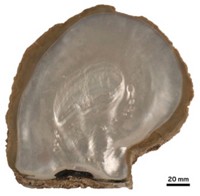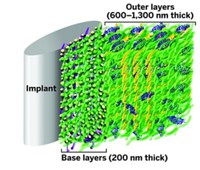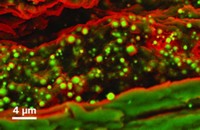Advertisement
Grab your lab coat. Let's get started
Welcome!
Welcome!
Create an account below to get 6 C&EN articles per month, receive newsletters and more - all free.
It seems this is your first time logging in online. Please enter the following information to continue.
As an ACS member you automatically get access to this site. All we need is few more details to create your reading experience.
Not you? Sign in with a different account.
Not you? Sign in with a different account.
ERROR 1
ERROR 1
ERROR 2
ERROR 2
ERROR 2
ERROR 2
ERROR 2
Password and Confirm password must match.
If you have an ACS member number, please enter it here so we can link this account to your membership. (optional)
ERROR 2
ACS values your privacy. By submitting your information, you are gaining access to C&EN and subscribing to our weekly newsletter. We use the information you provide to make your reading experience better, and we will never sell your data to third party members.
Environment
Oyster Shell Helps Heal Bone Defects
Tissue Engineering: A composite of calcium sulfate and oyster shell powder acts as a scaffold for new bone growth
by Laura Cassiday
July 31, 2014

Injuries or surgeries, such as tumor removal, can create gaps in bone that are too large to heal naturally. To help regrow that bone, researchers report a new formulation for bone cement that combines calcium sulfate with oyster shell powder (ACS Appl. Mater. Interfaces 2014, DOI: 10.1021/am501448t).
Currently, the gold standard for fixing bone defects is autografting, in which surgeons harvest bone from elsewhere in the body, such as the hip bone, and use it to fill the gap. However, this procedure is painful and may cause infections or other complications at the site where the bone was taken. Alternatively, surgeons can fill bone defects with putties or cements, such as calcium sulfate. But these materials are not ideal for fostering new bone growth. For example, calcium sulfate degrades more quickly than new bone can form.
“I have seen many clinical dilemmas involving bone defects” and slow or incomplete healing, says Yue Shen, a doctor of orthopedics at Zhejiang University School of Medicine, in China. “I hoped to find an ideal bone substitute to relieve patients’ pain.”
To this end, Shen and colleagues, including Shigui Yan at Zhejiang University, Qing Huang at the Chinese Academy of Sciences, and Lei Peng of Hainan Medical University, combined calcium sulfate with a natural biomineral, oyster shell. Previous research had shown that oyster shell mineralizes in a way similar to new bone in people (Science 2004, DOI: 10.1126/science.1090506). In addition, oyster shell contains signaling molecules that enhance bone growth.
The researchers made composites of calcium sulfate with varying amounts of oyster shell powder. They noticed that the time for the composite to harden increased with the weight percentage of oyster shell powder. The team next tested the new cements by immersing the materials in simulated body fluid, a solution with ion concentrations similar to those in human blood plasma. As expected, pure calcium sulfate degraded rapidly in the fluid. Adding oyster shell to the calcium sulfate decreased the degradation rate. The composite containing 18% oyster shell powder by weight showed the slowest degradation rate over 28 days of soaking. The team also looked for the formation of layers of apatite, a mineral that is a major component of bone, on the composites. Apatite readily deposited on the materials with oyster shell but did not form on pure calcium sulfate.
In another test, the team implanted their composites in 8-mm-diameter holes in the femurs of 24 live rabbits. After eight weeks, they looked for new bone growth. The composite containing 18% oyster powder by weight performed the best. It stimulated the growth of almost twice as much new bone as the pure calcium sulfate.
Melissa A. Grunlan, a biomedical engineer at Texas A&M University, says that the composites have clinically useful properties, such as the ability to tailor the setting and degradation times of the cement by varying the amount of oyster shell.
James H. Henderson, a biomedical engineer at Syracuse University, says, “Although these initial findings look promising, as with any new material for potential medical application, there are many possible challenges ahead.” For example, the oyster shell might elicit an immune response when implanted in a patient, he says. “That’s a critical issue that needs to be examined long before this concept is ready for clinical translation.”





Join the conversation
Contact the reporter
Submit a Letter to the Editor for publication
Engage with us on Twitter